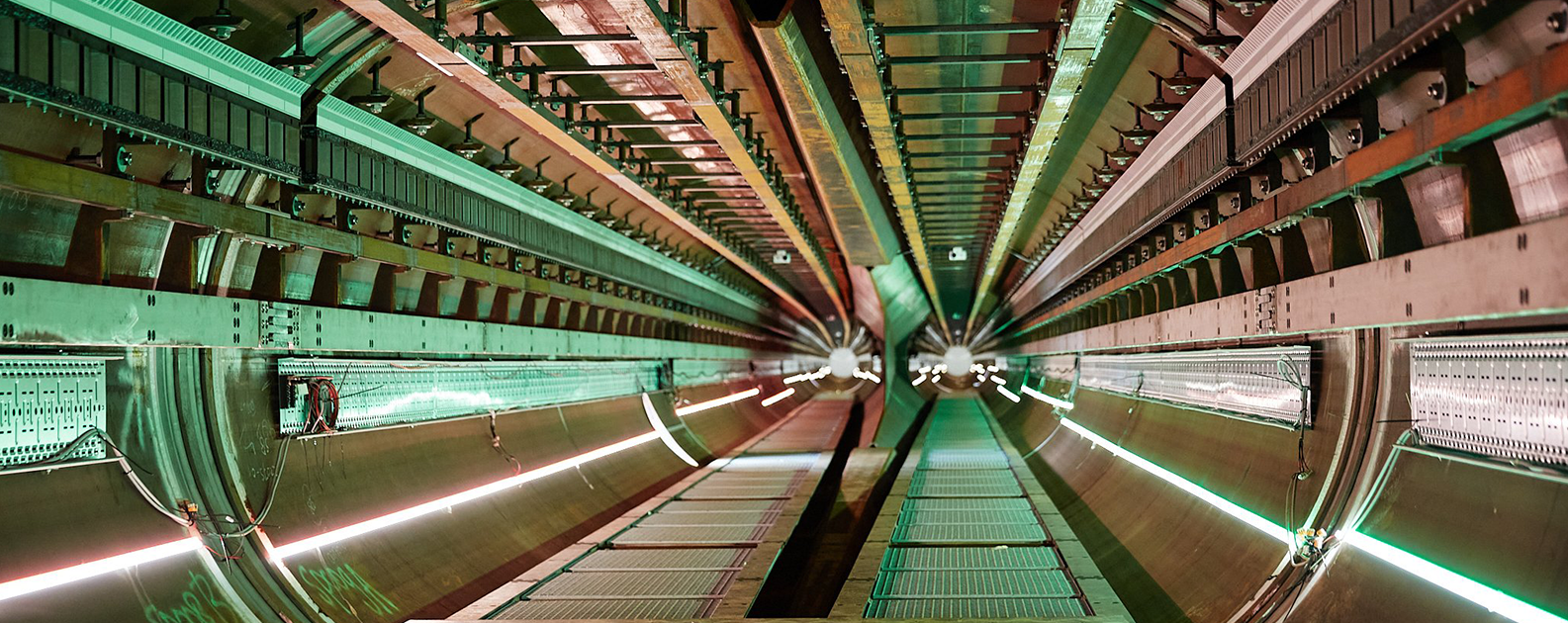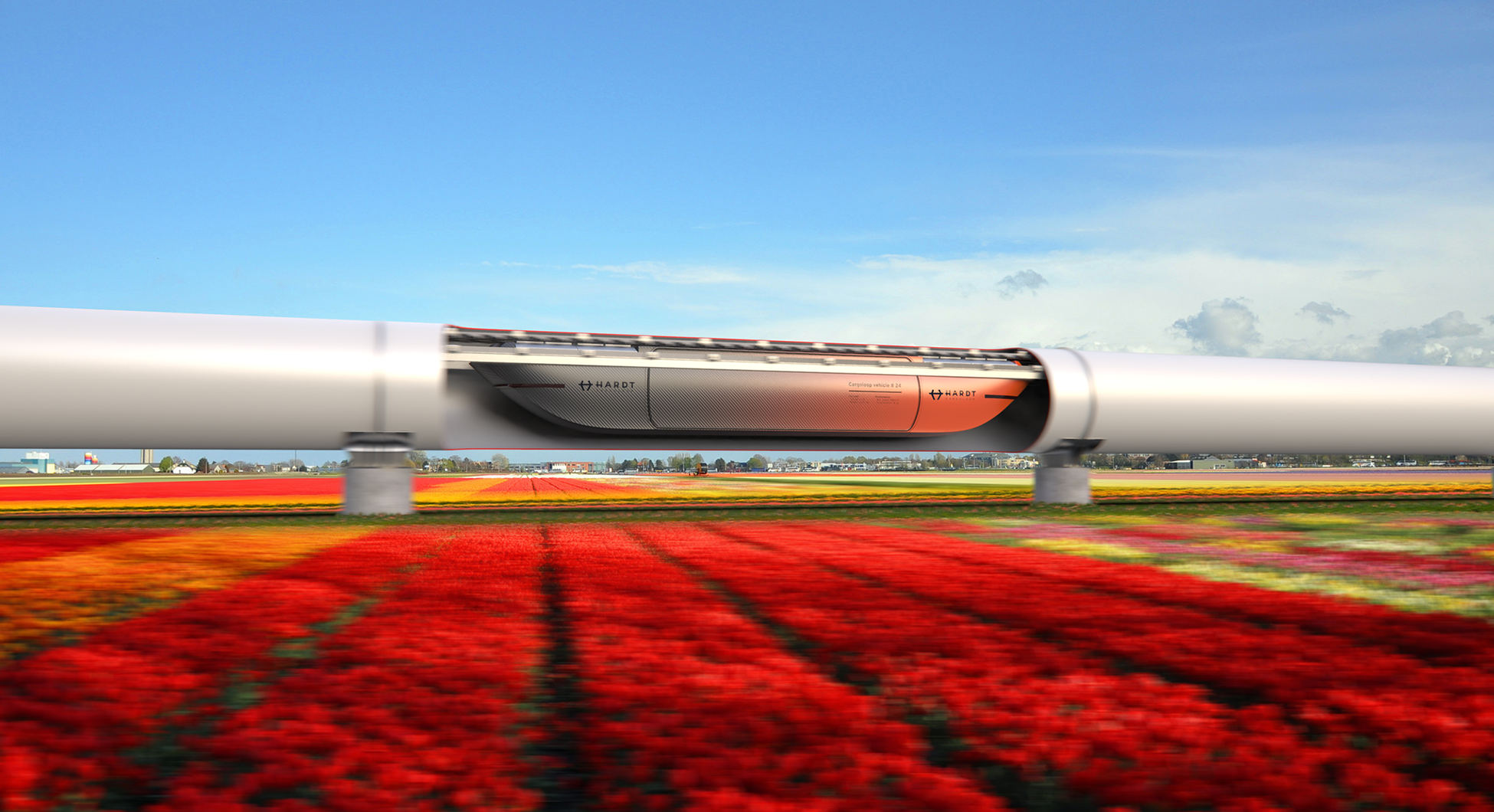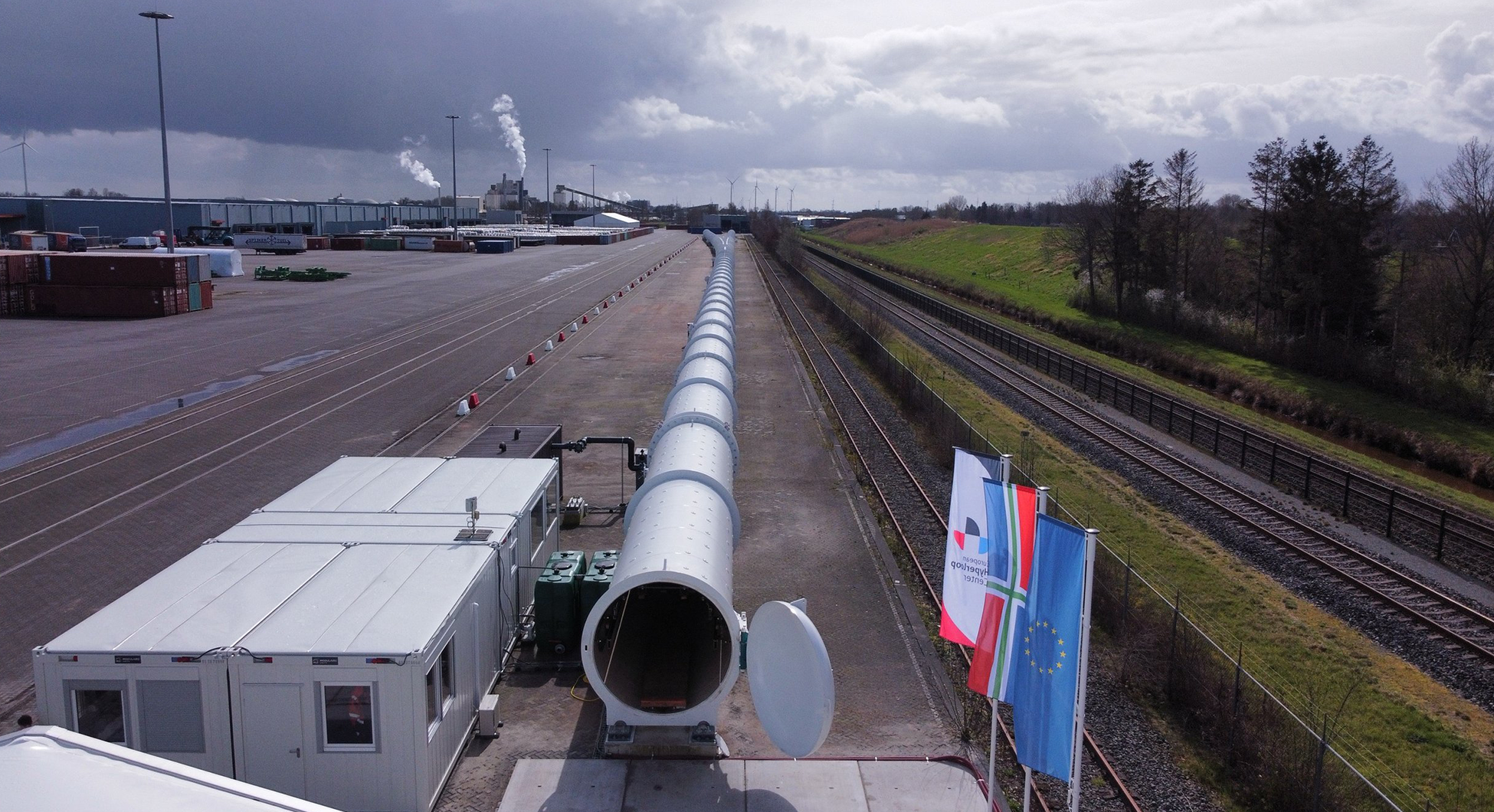Ready, Set, Levitate: European Hyperloop Center opens for the first tests in TopDutch
The future of mobility is already taking place in the TopDutch region. In March 2023, the European Hyperloop Center (EHC) opened its doors for the first tests on its hyperloop test infrastructure. The mission is to accelerate innovation and collaboration in the sector, with the goal of realizing a technology that could revolutionize intra-continental transport.

On an industrial estate in provincial Groningen, lies a 420-meter metal tube that has the potential to lead the transition to sustainable long-distance travel. The European Hyperloop Center is a state-of-the-art test facility in Veendam, in the TopDutch region, featuring a hyperloop test tube that can demonstrate all essential hyperloop technologies including a full lane switch.
What is the hyperloop?
If you haven’t heard of hyperloop technology yet, here’s a quick primer: The hyperloop offers a high-speed, efficient, and sustainable alternative to traditional long-distance travel methods such as airplanes and trains. At its core, the Hyperloop system consists of pressurized capsules, known as pods, which travel through a low-pressure tube. The reduced air resistance allows these pods to reach unprecedented speeds, comparable to those of a plane, but with the convenience of departing from and arriving at central city locations, and a potentially much higher capacity for cargo and passengers.

The magic behind this futuristic mode of transport lies in its use of magnetic levitation, or maglev, technology. By employing powerful magnets, the pods are lifted off the track, minimizing friction and enabling them to glide effortlessly at high velocities. This not only contributes to the hyperloop's speed but also ensures a smooth and quiet ride.
The hyperloop has promising benefits. The infrastructure is estimated to be cheaper compared to high speed rail. The spatial integration of the hyperloop is deemed easier compared to other types of infrastructure. Lastly, the energy use of traveling with a hyperloop is estimated to be 10x less compared to traveling by car or by plane, providing an energy-efficient solution for the growing transportation needs.
What is the European Hyperloop Center?
To foster technical advancement of the hyperloop ecosystem, the European Hyperloop Center is an open hyperloop test facility. The test infrastructure at the EHC is designed to represent real-world conditions. The inclusion of a full lane switch is a particularly notable feature, which is essential for the realization of hyperloop networks.
Organizations are welcome to test their technologies in this infrastructure. Hardt Hyperloop, a leading innovator in the field, is set to commence its first tests in the coming weeks.
Marinus van der Meijs, co-founder & Technology and Engineering Director at Hardt Hyperloop, commented on the upcoming tests: “The European Hyperloop Center's facility is the perfect ground for us to validate and advance our technology. This infrastructure enables us to demonstrate the essential technologies such as magnetic levitation, propulsion, stabilization, and even lane-switching, at speeds up to 100 km/hr”.
The EHC is part of the Hyperloop Development Program (HDP): a public-private partnership of more than 25 partners to advance the hyperloop technology. The hyperloop pipes are made from steel developed by POSCO (KR) in collaboration with Tata Steel (NL), have been assembled into fully pre-fabricated hyperloop tubes by contractor Mercon (NL), and have been installed by infrastructure company Denys (BE). In total, more than 50 companies have been involved in the realization of the infrastructure.
Multiple hyperloop technology companies and research institutes are part of the HDP, consisting of EuroTube (CH), Hardt Hyperloop (NL), Nevomo (PL), and Zeleros (ES). The HDP has financial support from the European Commission, the Dutch Government, and the Province of Groningen.
Sascha Lamme, Director of the EHC, expressed his enthusiasm: “This marks a pivotal moment in hyperloop development. It is great that this state-of-the-art facility in the Province of Groningen has been brought to life with the support of all our partners, and we can’t wait for the first tests to happen”.
What does the European hyperloop sector look like?
Due to the technical advancements of hyperloop, there is an increase in market traction for hyperloop globally. In Italy, a feasibility study on a hyperloop pilot route has recently started. India is gearing up to start a hyperloop pilot in 2026. At a continental level, the European Commission has proposed to include hyperloop in its TEN-T policy with support of the European Parliament. This policy is aimed at enhancing the connectivity between the European Member States.

The European Hyperloop Center is also part of a European Research Infrastructure Cluster together with a hyperloop test facility in Switzerland, DemoTube (120 meters), from hyperloop developer EuroTube. Combining the results of both hyperloop test facilities further accelerates the advancement the hyperloop development.


